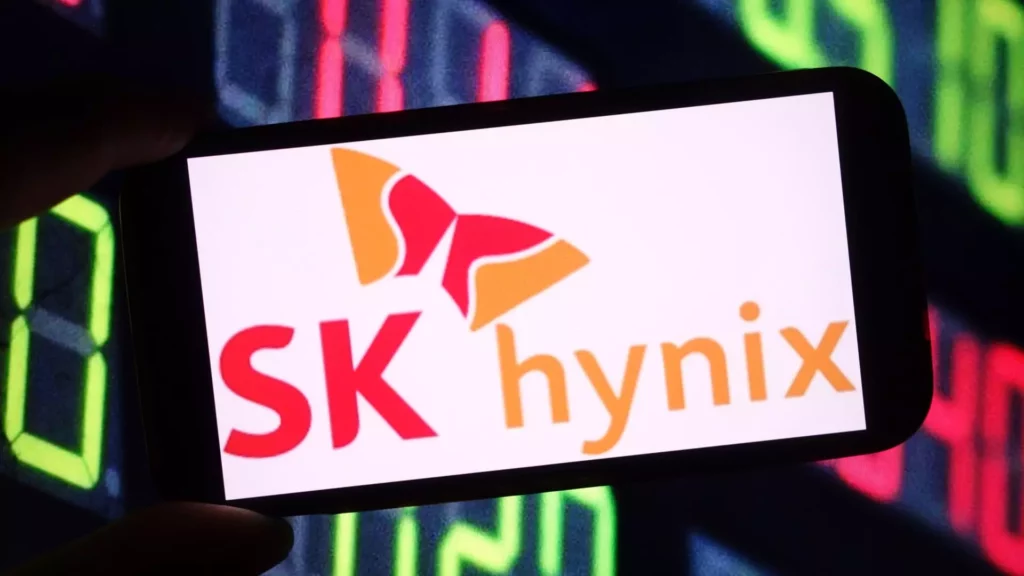Recent developments from South Korea’s SK Hynix have sent ripples through the semiconductor realm, showcasing an impressive first-quarter financial report that highlighted a revenue of 17.64 trillion won (approximately $12.36 billion). This achievement not only exceeded market expectations but also represented an astonishing 42% year-on-year growth. As the company ramps up production capabilities to meet soaring demands, particularly from the artificial intelligence (AI) sector, it underscores its role as a titan in the semiconductor memory sphere. However, beneath these stellar numbers lies a more complex narrative, one that reveals the cyclical nature of the semiconductor industry and raises questions about sustainability, adaptability, and future competition.
The AI Demand Revolution
At the heart of SK Hynix’s extraordinary financial performance is a burgeoning demand for high bandwidth memory (HBM), which plays a vital role in processing power for AI applications. Given the recent acceleration of AI advancements spearheaded by companies like Nvidia, SK Hynix has successfully cemented its status as a primary supplier of Dynamic Random Access Memory (DRAM). This strategic emphasis on HBM has positioned them favorably among tech giants that are increasingly reliant on these sophisticated memory solutions. The interconnectedness of consumer behavior and technological adoption further amplifies this urgency; from smartphones to sophisticated consumer electronics, AI capabilities are becoming ubiquitous.
Nevertheless, one must tread carefully, as the industry is rife with fluctuations and unpredictability. While SK Hynix is experiencing remarkable growth now, history has shown that markets can swing drastically, often influenced by geopolitical events and rapid technological updates. The nuanced landscape reveals not just an opportunity, but inherent risks that need to be acknowledged as SK Hynix navigates the present momentum.
A Contrarian View on Financial Metrics
Looking deeper into the figures, one cannot ignore the slight sequential decline in revenue, dipping by 11%, and an 8% decrease in operating profit when compared to the preceding quarter. These dips, albeit small in scale given the broader context of their year-on-year growth, signal a potential cautionary tale. The cyclical nature of the semiconductor sector can’t be understated: rapid growth periods are often followed by slowdowns as the industry grapples with supply and demand mismatches amid broader economic parameters.
Herein lies a fundamental question: Is SK Hynix merely a beneficiary of current trends, or is it truly capable of maintaining its lead as the landscape evolves? The caution exhibited by the company in acknowledging impending uncertainty tied to macroeconomic factors, especially tariffs from the U.S., indicates that the road ahead may not be as smooth as it appears.
The Complexity of Global Market Dynamics
The complexities of today’s global market make SK Hynix’s situation even more intriguing. They remain aware that the semiconductor space is especially sensitive to geopolitical fluctuations, including possible tariff impositions. The company’s recent statements reflect a dual-sided reality: immediate demands tied to AI growth may remain strong, but other segments could face headwinds that could affect overall market stability.
McCarthy in the political sphere often discusses the notion of economic sovereignty— nations prioritizing home-grown industries in the wake of global tensions. This could lead to legislative frameworks that impact imports and exports, forcing companies like SK Hynix to navigate choppy waters wherever they operate. The potential for volatility exists not only for SK Hynix but for the entire industry, underscoring the importance of a diversified strategy that extends beyond fostering relationships only with AI-centric clients.
Pioneering Innovation Amid Competitive Pressures
In the face of heightened competition, SK Hynix doesn’t just rely on its current achievements; it actively seeks out innovative solutions to maintain its leading edge. Recent statistics from Counterpoint Research show that SK Hynix captured an impressive 70% of the HBM market by revenue during the first quarter, outpacing fierce contenders like Micron Technology and Samsung Electronics. This dominant presence allows them to secure critical partnerships, especially with clients focused on AI developments. Yet, even with such advantages, competition promises to intensify as other players ramp up their investments in research and development.
To continue thriving, SK Hynix must maintain flexibility, continually adapting to satisfy the evolving needs of both consumer and enterprise markets. The crucial balance lies in not just meeting existing demands, but forecasting future trends and technologies that will reshape the semiconductor landscape.
As the trajectory unfolds, SK Hynix sits in a unique position: poised for exponential growth, yet carefully walking the tightrope that demands both innovative thinking and scrutiny of external economic pressures. Establishing itself as a pioneer in memory technology while remaining acutely aware of the risks associated with market shifts will be vital for SK Hynix as it prepares for the unpredictable future that lies ahead.









Leave a Reply